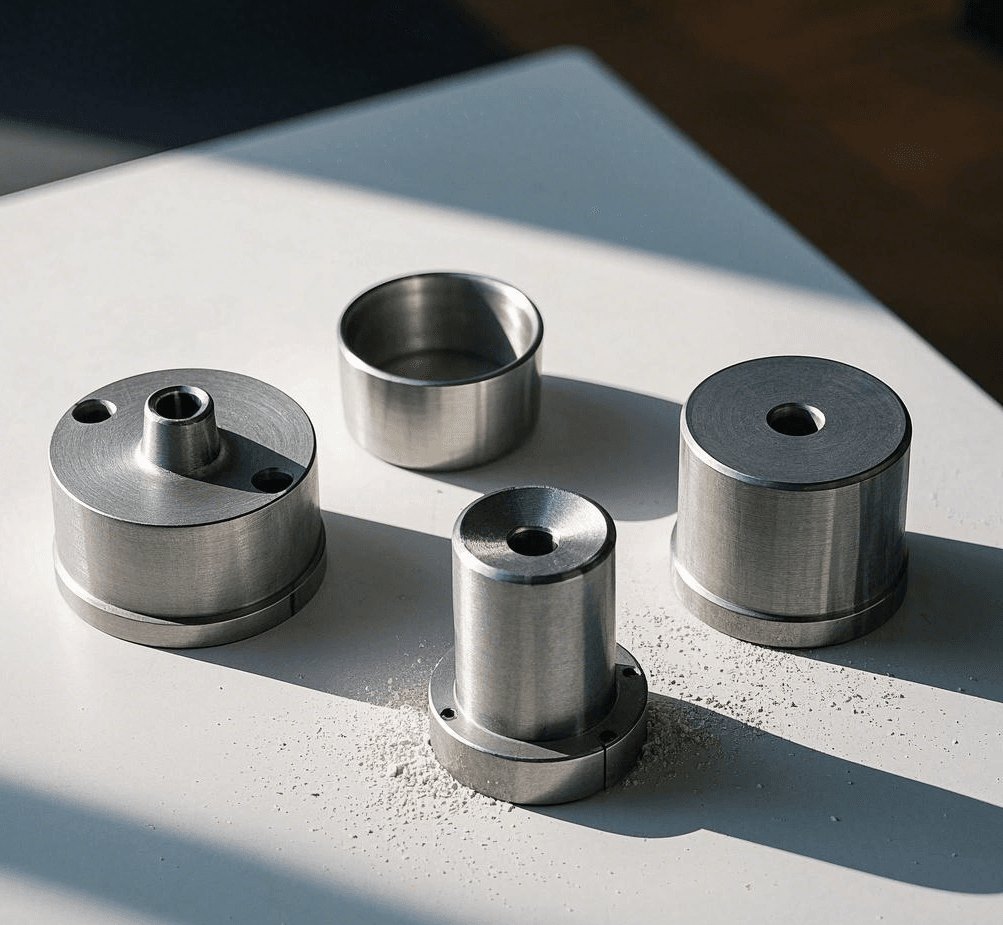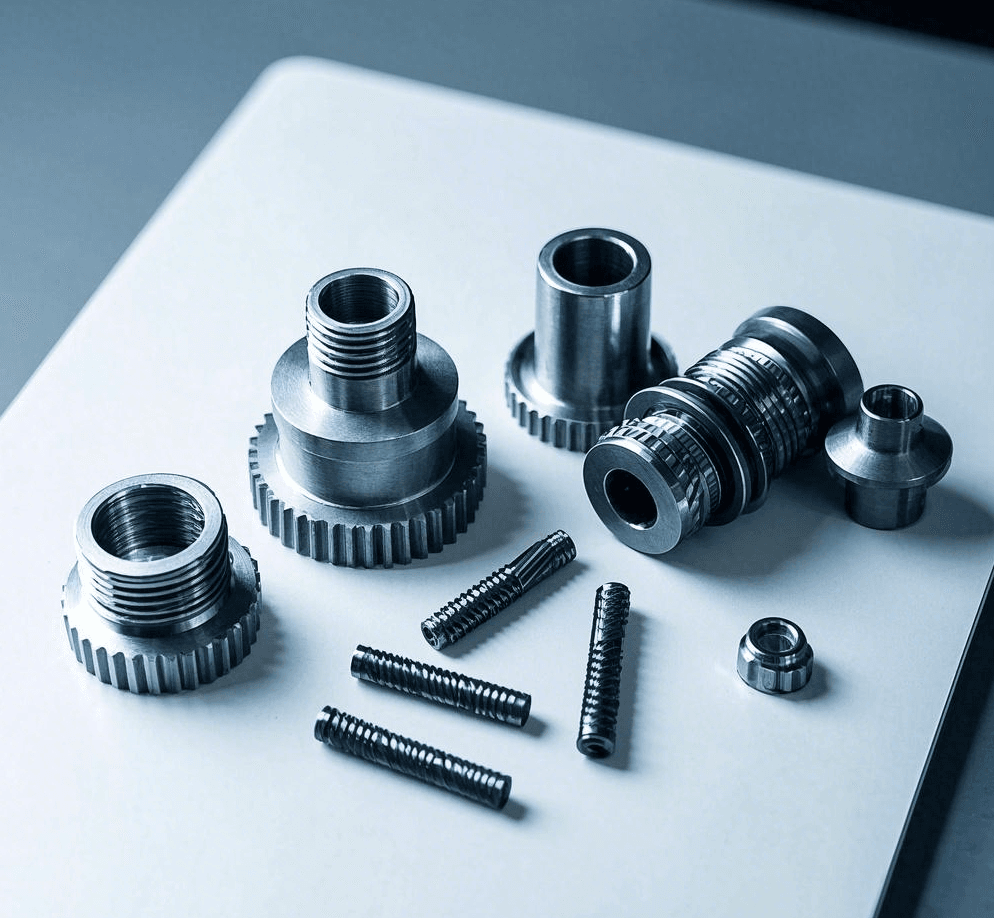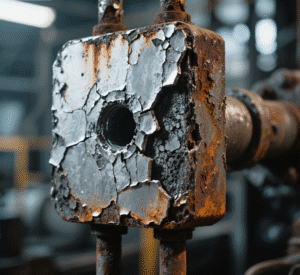Introduction: The Importance of Testing in Titanium Forging Production
Titanium forgings are used in critical applications such as aerospace, medical devices, and energy systems, where reliability and performance are paramount. Ensuring their quality requires rigorous testing to confirm mechanical properties, structural integrity, and compliance with industry standards. But what testing methods are commonly used to achieve this?
Quality assurance for titanium forgings involves non-destructive testing (NDT), mechanical testing, and metallurgical analysis to detect flaws, verify strength, and ensure compliance with specifications.
Let me guide you through the key methods used to uphold the quality of titanium forgings.
How Is Non-Destructive Testing (NDT) Used for Titanium Forgings?
Non-destructive testing allows for the examination of titanium forgings without damaging the material, making it ideal for identifying surface and subsurface defects.
Common NDT methods include:
• Ultrasonic Testing (UT): Uses high-frequency sound waves to detect internal flaws like cracks, voids, or inclusions.
• Magnetic Particle Testing (MPT): Identifies surface and near-surface defects in ferromagnetic materials, but limited for titanium unless paired with specialized techniques.
• Dye Penetrant Testing (DPT): Highlights surface cracks and imperfections by applying a liquid dye, often used for complex shapes.
• Radiographic Testing (RT): Employs X-rays or gamma rays to reveal hidden defects within the material.
For me, NDT is indispensable for ensuring the structural integrity of titanium forgings without compromising their usability.

What Mechanical Testing Methods Are Applied?
Mechanical testing evaluates the strength, ductility, and fatigue resistance of titanium forgings to ensure they meet performance requirements.
Key tests include:
• Tensile Testing: Measures the tensile strength, yield strength, and elongation of the material to confirm its ability to withstand stress.
• Hardness Testing: Determines the material’s resistance to indentation and wear, often performed using Rockwell or Vickers methods.
• Fatigue Testing: Simulates repeated loading conditions to assess the forging’s durability under cyclic stresses.
• Impact Testing: Evaluates toughness by measuring the material’s ability to absorb energy during sudden impacts.
For me, mechanical testing ensures that titanium forgings deliver consistent performance in high-stress applications.
How Does Metallurgical Analysis Ensure Material Quality?
Metallurgical analysis provides a detailed understanding of the microstructure and chemical composition of titanium forgings.
Methods include:
• Microscopic Examination: Analyzes grain size, phase distribution, and any inclusions or voids in the forging.
• Chemical Analysis: Confirms the material’s composition to ensure it meets alloy specifications. Techniques such as optical emission spectrometry (OES) or X-ray fluorescence (XRF) are commonly used.
• Alpha Case Detection: Identifies and removes brittle oxide layers formed during high-temperature forging processes, which can weaken the material.
For me, metallurgical analysis is critical for ensuring that titanium forgings meet both performance and safety standards.
How Are Dimensional Inspections Conducted?
Precision is crucial in titanium forgings, especially for components with strict dimensional tolerances.
Techniques include:
• Coordinate Measuring Machines (CMM): Provide accurate measurements of complex geometries to ensure compliance with design specifications.
• Optical Scanning: Uses lasers or structured light to create 3D models of the forging for comparison against CAD designs.
• Manual Gauging: Verifies key dimensions using calipers, micrometers, and other precision tools.
For me, dimensional inspections ensure that titanium forgings fit seamlessly into their intended assemblies.
Why Is Destructive Testing Sometimes Necessary?
While non-destructive methods are ideal, destructive testing is occasionally required for deeper insights into material properties.
Examples include:
• Fracture Toughness Testing: Measures the material’s resistance to crack propagation under stress.
• Macro Etching: Reveals internal defects or inconsistencies in grain flow by etching a cross-section of the forging.
For me, destructive testing, though invasive, provides invaluable data for refining forging processes and ensuring quality.

How Do Industry Standards Guide Titanium Forging Testing?
Testing for titanium forgings is often guided by strict industry standards to ensure consistency and reliability.
Relevant standards include:
• ASTM Standards: Define mechanical properties, chemical composition, and testing methods for titanium alloys (e.g., ASTM B381 for titanium forgings).
• AS9100: Specifies quality management systems for aerospace-grade components.
• ISO Standards: Cover a range of testing protocols for titanium in medical, aerospace, and industrial applications.
For me, adherence to these standards guarantees that titanium forgings meet global quality expectations.
Claim: Why Testing Is Critical for Titanium Forgings
Thorough testing methods, including NDT, mechanical analysis, and metallurgical evaluations, ensure that titanium forgings meet stringent quality requirements. These processes verify their suitability for critical applications, minimizing risks and ensuring reliability.
Conclusion: Testing as the Backbone of Titanium Forging Quality
When I think about the importance of testing titanium forgings, it’s clear that these rigorous methods are essential for maintaining performance and safety. From ultrasonic scans to fatigue testing, each step ensures that the material is ready to excel in demanding environments. For me, quality assurance through comprehensive testing is what makes titanium forgings a trusted choice across industries.






